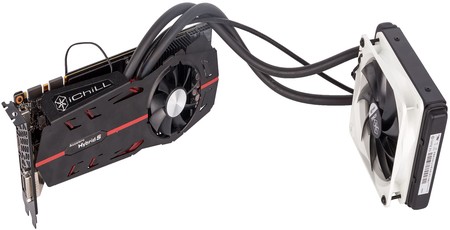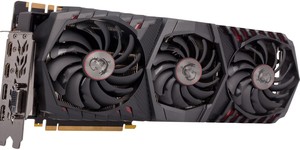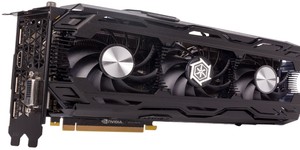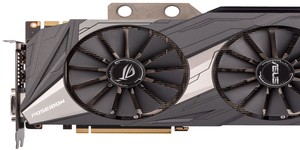Test Setup
Our GPU test rig uses Intel's Z170 platform. Specifically, we use the Asus ROG Maximus VIII Hero Alpha paired with an Intel Core i7-6700K. With four cores and eight threads via HyperThreading, the CPU ensures even the most multi-threaded games won't be bottlenecked, and we've overclocked it to 4.5GHz as well with a base clock of 100MHz, a multiplier of 45 and a vcore of 1.28V, further alleviating CPU bottlenecks. The CPU is paired with 16GB (4 x 4GB) of Corsair Vengeance LPX DDR4 clocked at 3,000MHz and cooled by a Corsair Hydro Series H100i GTX.
The rig is powered by the Corsair AX1500i, which has enough wattage and 8-pin PCI-E power connectors to deal with any multi-GPU set-up we care to throw at it. It's all housed inside a Corsair Graphite Series 760T, which is spacious enough for any card. The final component is an OCZ Vector 180 960GB SSD, giving us plenty of space for game installs.
Our results come from a mix of built-in benchmarks and custom, manually played sections, depending on the game. All benchmarks are repeated at least three times to ensure consistency. We test at 1,920 x 1,080 (1080p) and 2,560 x 1,440 (1440p), as well as at 3,840 x 2,160 (4K) with higher end cards. The operating system is an up-to-date copy of Windows 10 64-bit.
Test System
- CPU Intel Core i7-6700K at 4.5GHz (45 x 100MHz)
- Motherboard Asus ROG Maximus VIII Hero Alpha
- Memory 4 x 4GB Corsair Vengeance LPX 2,800MHz DDR4 (at 3,000MHz)
- PSU Corsair AX1500i
- SSD OCZ Vector 180 960GB
- Case Corsair Graphite Series 760T
- CPU cooler Corsair Hydro Series H100i GTX
- Operating system Windows 10 64-bit
AMD Graphics Cards
AMD Radeon RX Vega 64 8GB - 1,274MHz GPU (1,546MHz boost), 1.89Gbps HBM2 (Radeon Software Crimson 17.8.2)
AMD Radeon RX Vega 54 8GB - 1,156MHz GPU (1,471MHz boost), 1.6Gbps HBM2 (Radeon Software Crimson 17.8.2)
Nvidia Graphics Cards
Inno3D GeForce GTX 1080 Ti iChill Black 11GB - 1,607MHz GPU (1,721MHz boost), 11.4Gbps GDDR5X (GeForce 385.41)
Aorus GeForce GTX 1080 Ti Xtreme Edition 11GB - 1,607MHz GPU (1,721MHz boost), 11.2Gbps GDDR5X (GeForce 385.41)
EVGA GeForce GTX 1080 FTW 8GB - 1,721MHz GPU (1,860MHz boost), 10Gbps GDDR5X (GeForce 385.41)
Palit GeForce GTX 1070 GameRock Premium Edition 8GB - 1,670MHz GPU (1,873MHz boost), 8.5Gbps GDDR5 (GeForce 385.41)

MSI MPG Velox 100R Chassis Review
October 14 2021 | 15:04









Want to comment? Please log in.